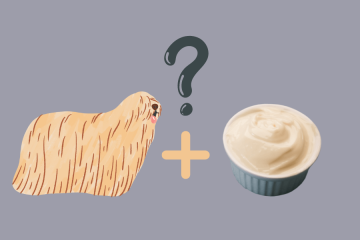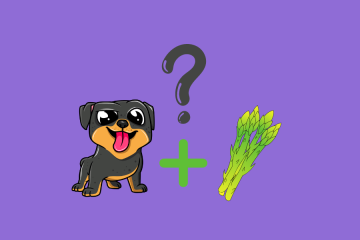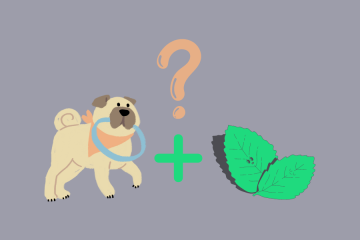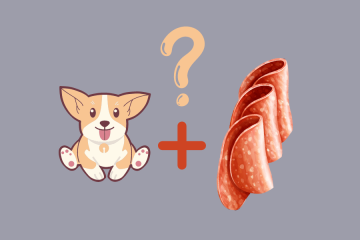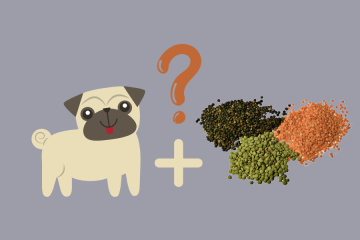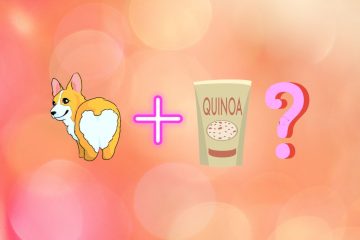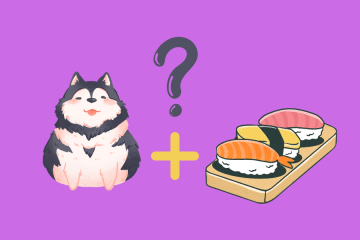Store-bought jello is primarily made of sugar and gelatin. It often contains artificial flavors, and if it’s sugar-free, you’ll find sweeteners like aspartame on the ingredient list. Can dogs eat jello? It depends on the sweetener used in the product. Read on for more information.
Can Dogs Eat Gelatin?
Gelatin is a protein derived from collagen, which is found in animal connective tissue and bones. It’s a safe food for humans, and even kids usually enjoy eating jello with toppings, such as whipped cream and fruit. Can dogs eat jello, or gelatin for that matter?

Generally, if your dog isn’t allergic to gelatin, they can eat it safely. Some people argue that it’s beneficial for their joints and skin, and some studies suggest that consuming gelatin can indeed improve collagen synthesis in the body.
Can Dogs Eat Jello?
Gelatin itself can be good for your pet, but can you give your dog jello in the form of colorful sweet candies? It’s not recommended.
Jello is a processed food and for that reason alone, you shouldn’t feed it to your dog. Apart from gelatin, which is safe for dogs to eat, jello also contains sugar (or artificial sweeteners), food coloring and flavors that may be dangerous or unhealthy for dogs.
In fact, the first ingredient in jello is sugar, and some brands even contain corn syrup. These ingredients can cause health problems like tooth decay, weight gain, diabetes, and even digestive issues. Instead of feeding your dog jello, offer your pet healthy treats – we’ll give you an idea for what to make with gelatin later.
Can Dogs Eat Sugar-Free Jello? Watch Out for Xylitol
Xylitol is a sugar substitute that is used in gums, toothpaste, breath mints, and some brands of jello. It has a low glycemic index and is suitable for diabetics. But unfortunately, it’s highly toxic to dogs. Even small amounts of xylitol can cause hypoglycemia, seizures and liver failure in dogs. ASPCA describes the mechanism of xylitol toxicity in detail.
So can dogs eat jello without sugar? Not if it contains xylitol. But if other sweeteners are used instead, it might be fine in moderation.

Can Dogs Eat Jello Pudding, or Is It Bad For Dogs?
Jello pudding is usually made from milk, sugar, modified cornstarch, vanilla extract and gelatin. Can dogs eat jello pudding? Although none of the ingredients is toxic per se, you shouldn’t feed your dog jello pudding. It may look tasty, but it contains a lot of sugar, which is not good for dogs to eat.
High sugar levels in candies like jello can cause dental problems, obesity and diabetes. It won’t harm your dog in small amounts, but there are plenty of healthier alternatives that you can offer as treats instead. Remember, giving in to the puppy eyes is a quick road to your pup gaining weight!
Can Dogs Eat Homemade Jello?
You can make your own homemade jello that doesn’t contain any bad chemicals or sweeteners. Gelatin is a safe product for dogs, and homemade jello or jelly can be good for them. It contains beneficial proteins and amino acids.
The sugar and additives in store-bought jello is what makes it unsuitable for a dog’s healthy diet. Plain jello without sugar and artificial substances is not harmful to dogs. For example, you can make treats made of gelatin and low-sugar fruit (such as watermelon or blueberries).
Or, remember that gelatin is made from animal bones and go for a meaty snack instead! Here’s a recipe for dog treats that your pooch will love:
Some other ingredients you can use instead of chicken are:
- salmon;
- ground beef;
- eggs;
- peanut butter.
Be creative and experiment with different flavors and textures – your dog will love treats made of gelatin, whether they’re plain or fully loaded with healthy food! Just skip the sugar and artificial additives and you’re good to go.
Conclusion: Flavored Jello, High in Sugar, Is Bad for Dogs
So, can dogs eat jello? Yes, canines can eat jello, but it should be homemade jelly made from unflavored gelatin and other healthy ingredients that are safe for dogs to eat. The candies made for humans should be kept in places where dogs cannot reach them.
If your dog steals some store-bought jello, the first thing you should do is check the ingredient list for xylitol, which should not be in there. Also check the sugar content, and if you see it’s high or artificial sweeteners were used, monitor your dog for any symptoms of toxicity.
Frequently Asked Questions
What Happens When a Dog Eats Jello?
Your dog’s reaction to jello will depend on the ingredients used and the amount eaten. In most cases, jello won’t cause any serious health problems. But if your dog ate a lot of jello and it contained xylitol, your pet may develop symptoms of hypoglycemia and liver failure.
How Much Jello Can a Dog Eat?
If you make your own dog-friendly jello, you can give your pup as much as you would regular treats. Store-bought jello should not be fed to dogs deliberately. A teaspoon or two probably wouldn’t hurt them, but too much sugar is dangerous for a dog’s health.
Can Dogs Eat Jell-O Brand Jello?
If you’re thinking of Jell-O, the brand, as a treat for your dog, you should avoid it. Jell-O contains artificial flavors and ingredients that are not suitable for dogs to eat. The sugar-free varieties may contain aspartame, which isn’t toxic per se, but it might be harmful to dogs.


